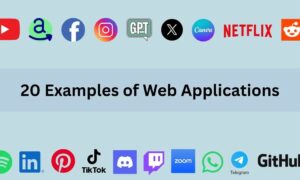In today’s digital age where online presence is necessary. covid-19 pandemic has served as a major reason for businesses to prioritize their online presence, leading to a significant surge in the web design and development sector. This industry has experienced rapid growth as companies recognize the importance of establishing a strong digital footprint.
In current times, it is important to develop web applications that can handle traffic, adapt to growing user requirements, and maintain optimal performance under any circumstance. This blog will cover all the key aspects and valuable insights that will help you in getting a robust and scalable application from a web application development company
In modern times, scalability and robustness are vital aspects of web development that ensure your application can handle increasing loads without compromising performance. With the help of proven strategies, you can get top-notch web application that has a strong foundation and grow effortlessly as your user base expands.
What Are Web Applications
Before embarking on the path of building web applications from a trusted web development company, let’s first establish a clear understanding of what web applications are.
Web applications are dynamic application programs that can be accessed through web browsers and are stored in a remote server. Web application commonly employs a combination of various server-side technologies such as PHP, ASP, Java, or Python to store, manage and retrieve data. These server-side technologies handle the processing, and logic behind the scenes enabling seamless interaction between the user interface and fundamental database. Some of them also use client-side scripts such as JavaScript, and HTML and some use both server-side and client-side simultaneously to signify data to the users.
Before you hire web app developers and jump on the bandwagon to build scalable web applications, it is necessary to clear the air about web applications. Most people confuse web apps with websites, there is a slight difference between them. Websites serve as platforms to access and view content whereas web applications are dynamic and task-oriented. Now, let’s move on and know more clearly about concepts around the development of web applications.
What is Scalability in web applications?
Scalability is a crucial factor for any web application. In simple terms scalability is the capacity of your web application to handle growing data volume and user demands without compromising performance or user- experience. As any web application gains popularity and attracts more users, the underlying infrastructure should be capable of handling the increased load and maintaining responsiveness.
Scalability ensures that the application can handle concurrent user-request, high-traffic volume, and data processing efficiently. It allows for horizontal or vertical scaling, enabling the addition of more servers or resources as needed.
By incorporating scalability, web applications can remain accessible, responsive, and reliable even during peak usage periods. Scalability also future-proofs the application making sure it can adapt to upcoming changes in users and effectively support business growth without experiencing bottlenecks.
It is necessary to have complete knowledge including development steps before getting hands-on mobile application development services from any company. To help you in moving further, we have compiled a list of steps that are required to build scalable and robust web applications.
Steps to Build Scalable and Robust Web Applications
Whether you’re developing a small personal website, an e-commerce platform, or a large-scale enterprise application, the stages discussed will apply to your project as well. So, let’s embark on the journey together and unlock the steps to building scalable and robust web applications that can thrive in today’s ever-evolving digital landscape.
1. Define your goals
Before starting your journey of a scalable web application with your web application development agency, it is necessary to establish a clear understanding of your goals and your expectations and whether you need to scale or not scale your web app. It is essential to set clear objective from the start will guide your development process for your software development company and ensure your solutions meets with desired outcomes.
2. Market Research
It is a preliminary step in building a robust web application. It is necessary to know about users and their pain points. This knowledge will allow us to design and develop a web application that meets user needs. With thorough market research, you can get to know your competitors well which will help you to identify the gaps in the market and learn from their successes and failure. For example- if you are taking Ecommerce development services from any company to get a proficient eCommerce solution, make sure to get beautiful designs, logos, and colors that polish your overall look, and get features that your users talk about the most.
3. Outline the application feature
To build a top-notch application, you need to compile a list of the best features that provide solutions to user problems. This step involves outlining the features and functionalities the application will offer to meet user needs. This step makes sure that the development process focuses on the key functions, avoids feature creep, and aligns best with the user- expectations. Discussing app functionality with web app developers for hire, they can work to establish a solid foundation for building robust and user-centric web applications.
4. Create a Minimum Viable Product (MVP)
Building an MVP is a crucial step in web application development. It involves developing a simplified structure of your web app’s user interface. By focusing on the essential features, an MVP shows how your app will work resulting in faster development, testing, and gathering better feedback. This process helps to refine the product and modify it according to market viability and minimize the risk of a failed application.
5. Wireframe and prototype
Wireframing and prototypes are crucial points in the process. Your web application development agency can develop a visual representation of the application structure, layout, and key components using a wireframe. This ensures clarity in design and functionality before proceeding with the development process. A prototype is taking the wireframe further by creating interactive mock-ups of the web application. They provide an opportunity to test interactive demos and gather feedback. You can submit your solution to the end users through different groups to get product validation.
6. Design your database
The step of designing your database in the web application development process is crucial to make sure efficient data storage, retrieval, and management. The specific requirements and nature of your application’s data will influence the choice of database. Designing your database effectively sets a strong foundation for data management, enables efficient data retrieval, and contributes to the overall performance and scalability of your web application.
7. Development Process
The development process is a fundamental step in the development process. This involves translating the designs and requirements into actual code, building the application functionality, and implementing the desired features. Using different web development tools developers can remove the complexities and help in bringing the web applications to life and transforming it from a concept to a fully functional application.
8. Testing of application
Testing is integral and an iterative component of the development process. It is considered an important step that helps identify and fix bugs and makes sure to assess the application’s functionality, performance, and reliability to ensure it meets desired quality. Proper testing helps to mitigate any risk and increases user confidence in the application’s functionality and performance.
9. Deployment and maintenance
The final step in the web application development process of making the application available and functioning on a server or hosting environment, allowing users to access and interact with it through the internet. Through careful planning, configuration, and testing ensure a smooth and successful deployment that meets the desired functionality, performance, and accessibility requirements. After deployment maintaining the web application is a continuous process to make sure adding new functionalities and removing bugs & other issues are constantly being released.
Conclusion
Web apps are becoming a necessity but, building a scalable and robust web application requires proper analyses, thoughtful implementation, and ongoing refinement. Knowing the best part about web application development, you can take the help of web application development services from a reliable company. By following a systematic approach and adhering to best practices, developers can ensure that the application meets the business requirements and users’ demands.
By following the steps in the above guide, emphasizing user-centric design, efficient code development, and ongoing feedback, developers can create web applications that not only meet immediate wants but also adapt to evolving needs, providing a scalable and satisfying user experience.
Author BIO

Rohan Singh is a Chief Executive Officer at SemiDot Infotech, Top rated multi-award-winning Android App development company providing a full suite of services and solutions to small, medium, and big enterprises, product companies & new-age start-ups.
He has extensive experience working for multinational companies and knows what it takes to take a company to the next level. He has a master’s degree in computer science. Rohan finds covering the tech world to be an exciting and engaging experience as each day brings new and groundbreaking technologies to explore and write about.



































